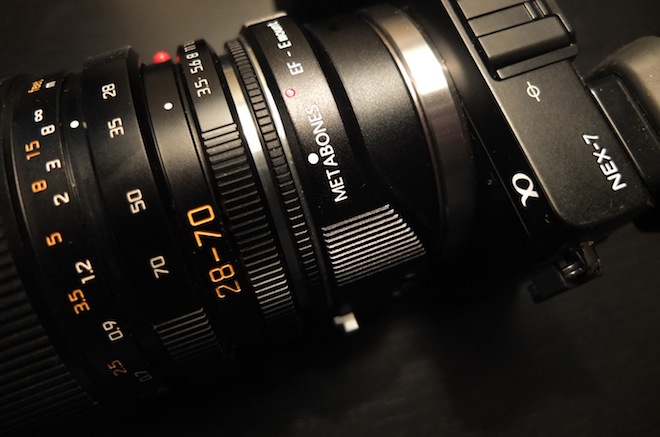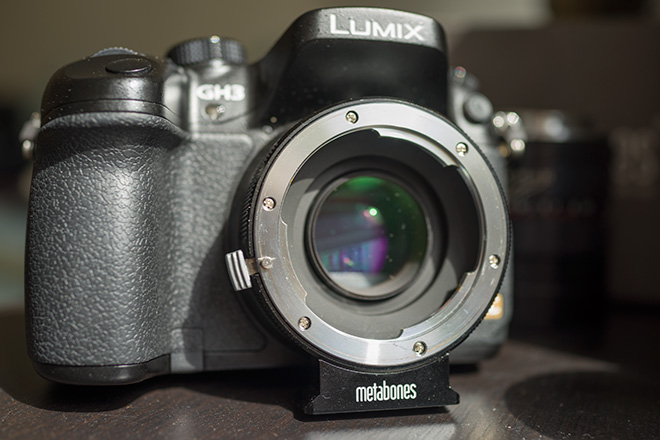
Buy the full range of mFT and E-mount Metabones Speed Booster adapters here
There’s more from EOSHD on the Speed Booster for Micro Four Thirds here, and for E-mount here
The Speed Booster has come to Micro Four Thirds where it turns the smaller sensor into a Super 35mm / APS-C equivalent – the cinema standard. I have been testing the Leica R, Nikon G and Contax Yashica Speed Boosters for Micro Four Thirds for a while now.
Here’s the verdict!
Check out these shots from the Speed Booster on the Panasonic GH3… Is this worth $399 to you?
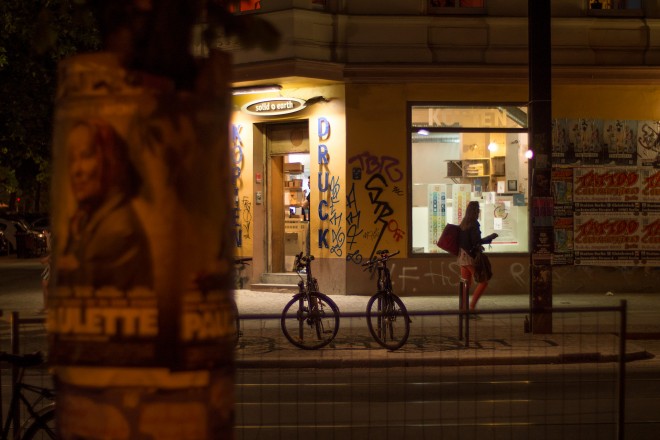

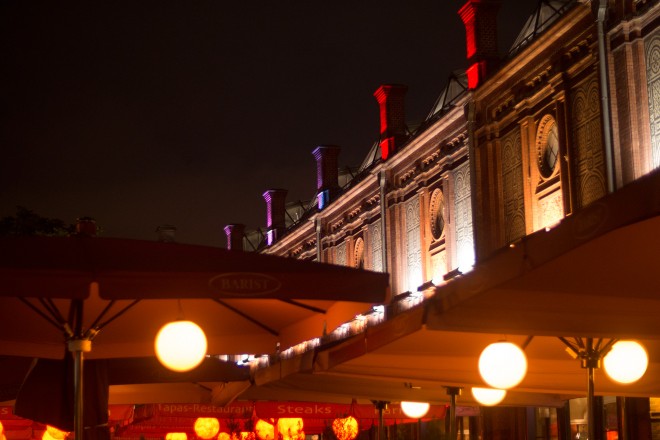
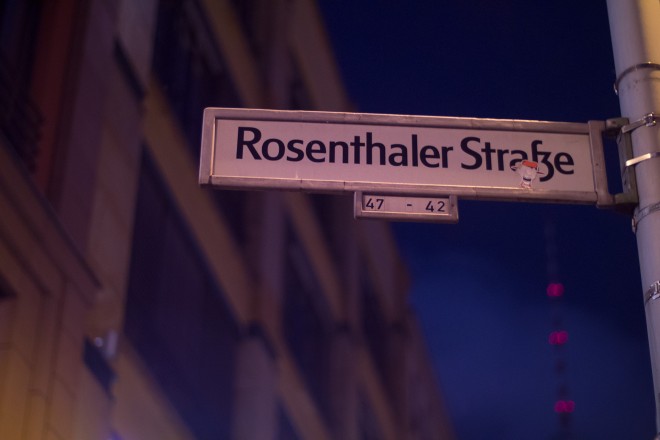
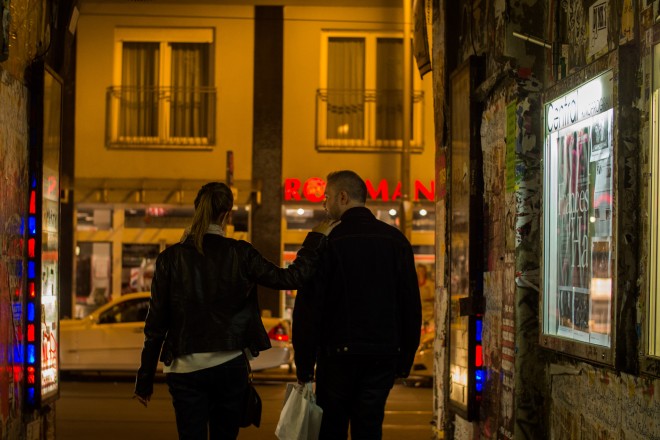
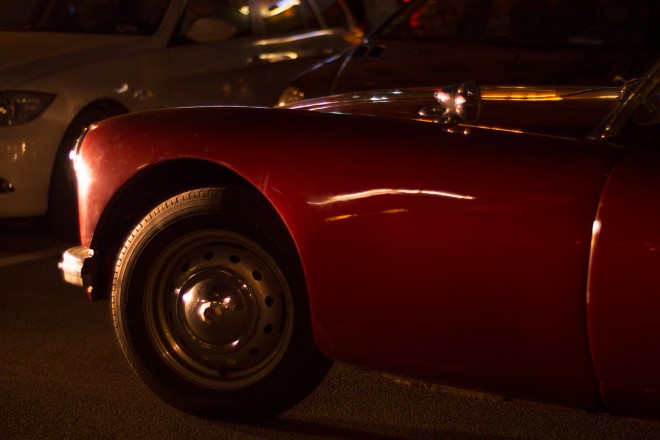
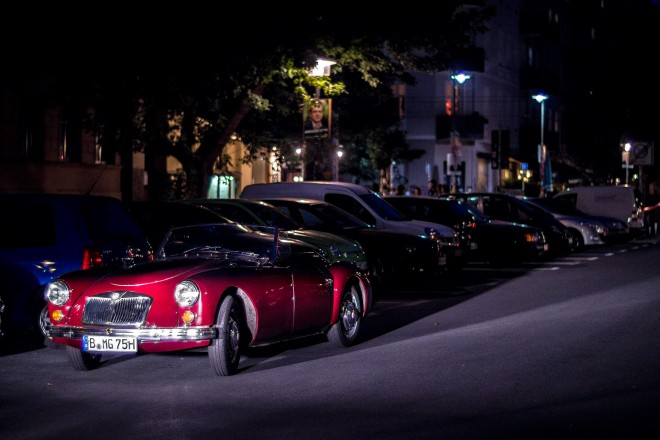
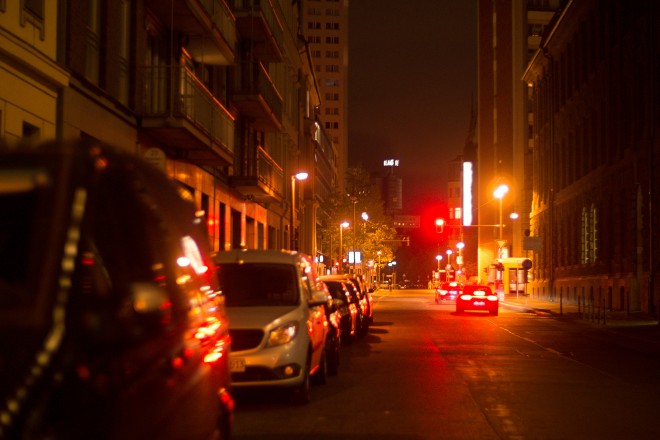

All stills were shot handheld with the Nikon 50mm F1.4 AIS.
This lens transforms on the GH3 with Speed Booster to a 35mm F1.0!
The cheapest alternative to this is the excellent SLR Magic 35mm T0.95.
That makes an old $100 Nikon lens and $399 Speed Booster a very good value proposition.
The brightness of the lens on Speed Booster allowed me to keep the shutter speed at 1/100 even in low light and the ISO below 800.
Edge and corner sharpness performance of the Speed Booster on APS-C is greatly improved on the Micro Four Thirds version. This is a 1:1 crop of the far right edge –
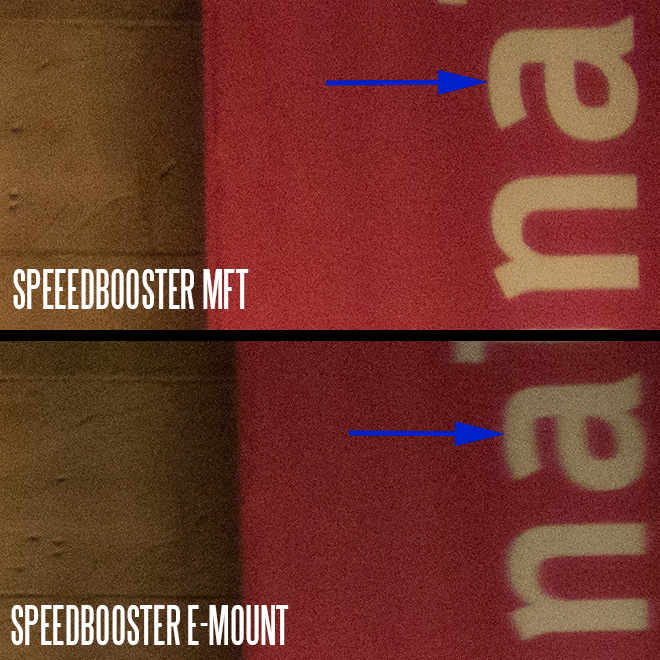
Although full frame lenses are generally not sharp in the corners on an actual full frame camera the E-mount Speed Booster did make the problem worse, so it’s great to see better corner and edge sharpness here.
Naturally it is using a more optimal part of the lens as the field of view never reaches the edge of the image circle like full frame does, so that helps too. Nevertheless glass designed by Caldwell Optics used by Metabones performs very well.
The test
I was provided with three Speed Boosters for Micro Four Thirds to try – the Leica R, Nikon G and Contax Yashica mount versions. All seem to have the same glass, but the Nikon G differs in construction slightly, featuring a built in aperture ring to control the aperture on modern Nikon G glass – lenses where the aperture is controlled by the camera body.
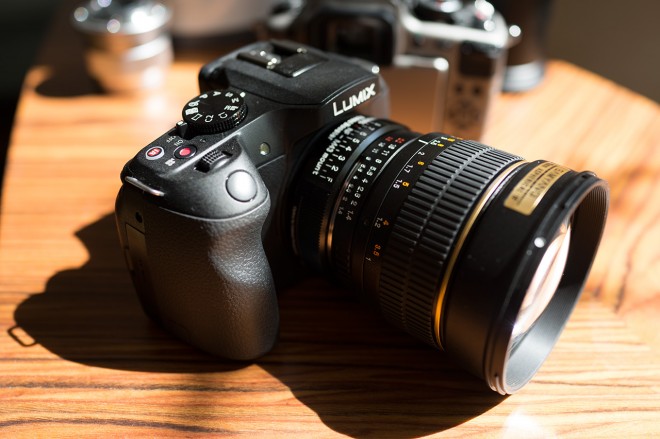
I found this worked OK but you have to be careful with Nikon glass with a manual aperture like the Samyang 85mm F1.4 (above on the Panasonic G6) to rotate the Metabones aperture ring to the correct position to allow control of the aperture on the lens itself.
The only other thing to watch out for is to make sure your old glass doesn’t have anything that protrudes too far into the adapter as that risks scratching the Speed Booster glass.
Tip:
To calculate the focal length and aperture of any lens on the Micro Four Thirds Speed Booster simply multiply by 0.71.
So an aperture of 1.4 x 0.71 = 0.99. Round up and you have F1.0. By the same calculation a 50mm lens becomes a 35mm and 35mm becomes 25mm.
Small size
The adapter is very compact in size, as are indeed a lot of the lenses you can use on it. Although brightness increases one stop from F1.4 to F1.0, the lens can be smaller as the physical aperture is not F1.0 but F1.4, and same goes for other apertures. F2.0 lenses are on the whole smaller than F1.4 ones, yet it is a F1.4 exposure you’re getting with Speed Booster.
Build quality is first class on all the adapters, and the glass element can be fine tuned for infinity focus by rotating it. The rotation moves the Speed Booster glass closer or further away from the sensor. Once the infinity point is perfect, a small grub screw is tightened to hold it in position. This is an improvement on the earlier E-mount Speed Boosters I have, where the glass can be somewhat loose and where regular fine tuning for infinity needed to be done.
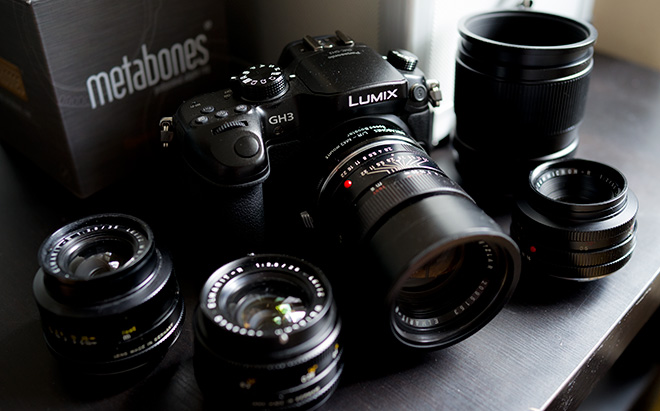
The advantage of the 1 stop boost in light means you can shoot at a lower ISO, which makes for a better image. This is of particular use on Micro Four Thirds cameras which aren’t famed for their low light capabilities. The GH2 and Blackmagic Cinema Camera mFT benefit greatly from this.
But it is when combined with the 5 axis stabiliser in the OM-D E-M5 that the Speed Booster really shines for stills, handheld. You not only turn an old Nikon, Contax or Leica R F1.4 lens into a F1.0 but are able to shoot at shutter speeds as slow as 1/10 and still get a sharp shot in almost complete darkness.
Super 35mm
S35 is the standard for cinema. Forget the crop factor of 1.5x over full frame when you are using cinema lenses, cinematographers don’t think in terms of full frame optics and sensor size. A crew used to shooting Super 35mm can now put a lens they know like a best friend on a camera like the Panasonic GH3 and get the framing they expect.
Along with the wider field of view (very useful with lenses such as the Tokina 11-16mm F2.8) you get a shallower depth of field when shooting wide open, compared to without the Speed Booster.
Lenses like the Sigma 18-35mm F1.8 will become equivalent to a Panasonic lens with the specs as follows… Brace yourself…
14-25mm F1.2!
There’s not a Micro Four Thirds lens that comes close to that on the market.
Unfortunately I only had access to the Canon mount version of the Sigma, so couldn’t try this on my Speed Boosters but as soon as Metabones bring out the Canon EF Speed Booster it will be the first lens I put on it. Very exciting.
Gotchas
Although the image generally sharpens up a bit in the centre, if shooting wide open or at fast apertures you can expect some blooming around bright light sources and some purple fringing. Here’s an example shot on the Nikon 50mm F1.4 –
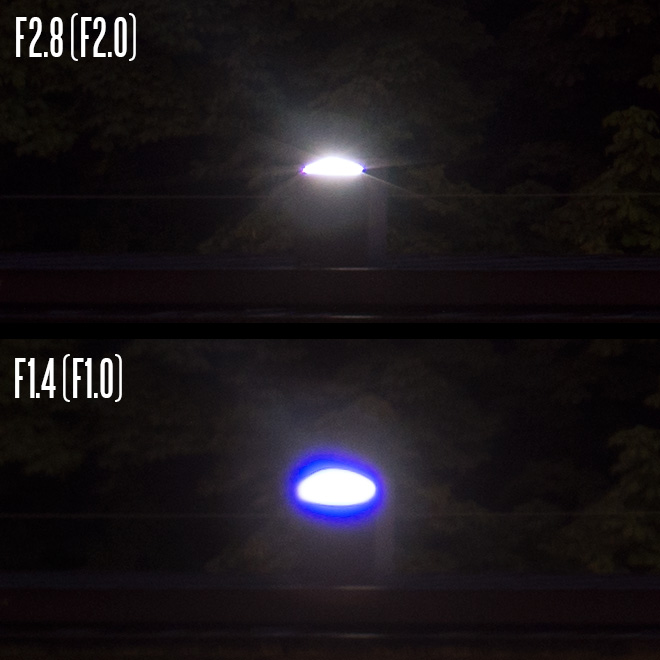
Although the fringing disappears when stopped down to F2.8, or when removed in post, it is something to be aware of, when for example you have a shot with a lot of street lights in it.
The other thing to be aware of is that the three most affordable Leica lenses need modification to work on the Speed Booster for Leica-R – the 28mm F2.8, 35mm F2.8 and 50mm F2.0.
Conclusion
As on E-mount, where Metabones gave us some of the appeal of full frame rendering of lenses, Micro Four Thirds arguably needs this more. The BMCC and Blackmagic Pocket Cinema Camera have even smaller sensors than the usual Micro Four Thirds cameras at 2.3x crop and 3x crop.
Speed Booster turns the Pocket into a 2x crop, the same as the GH3, and the GH3 into a 1.4x crop – roughly equal to the 1.5x crop of Super 35mm.
Lenses like the Canon 85mm F1.2L become a shallow depth of field monster at F0.85 – that’s almost Kubrick-NASA levels of low light performance!
All this is like having an extra set of glass, which if you set out to buy on the market would likely be A) impossible or B) prohibitably expensive.
For that reason, the Metabones Speed Booster for Micro Four Thirds is well worth your attention, and your $399.
It’s also fun.
I am looking forward to giving my FS100 low light beast a nice send off before it is retired, by partnering her up with the E-mount Speed Booster and Canon 85mm F1.2L. Candles at the ready, Mr Kubrick.
For the EOSHD review of the E-mount Speed Booster go here
